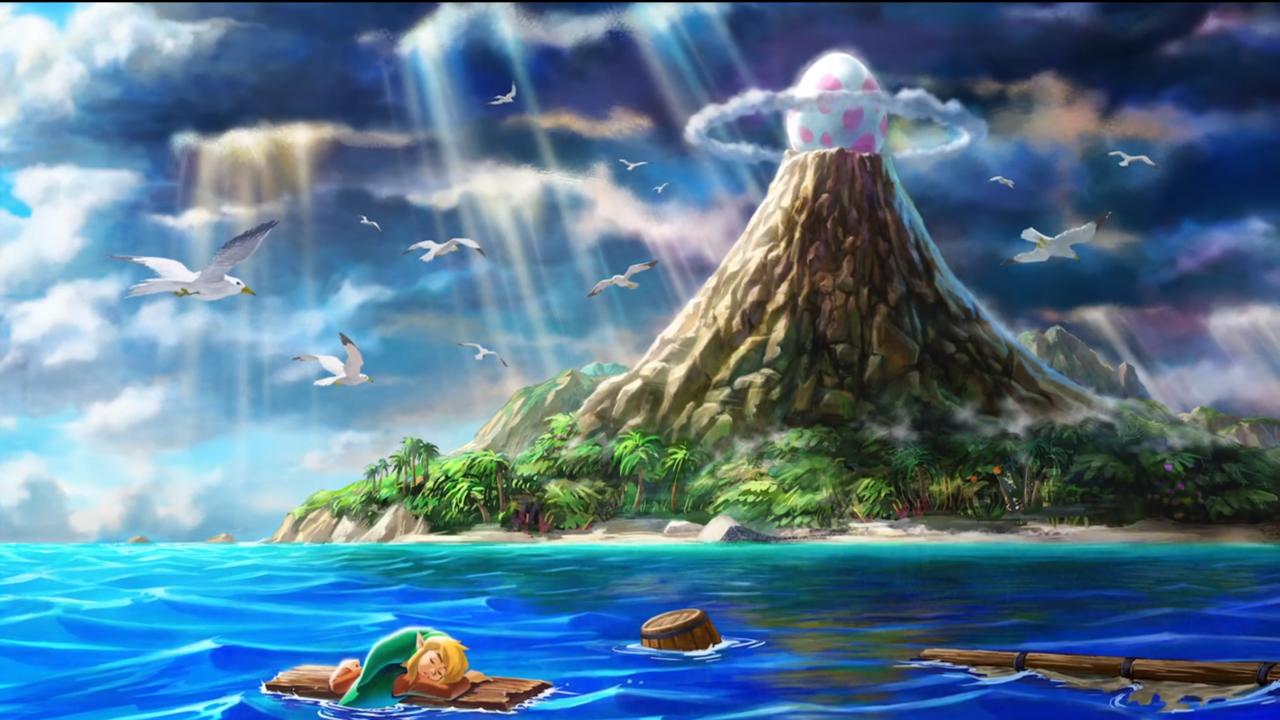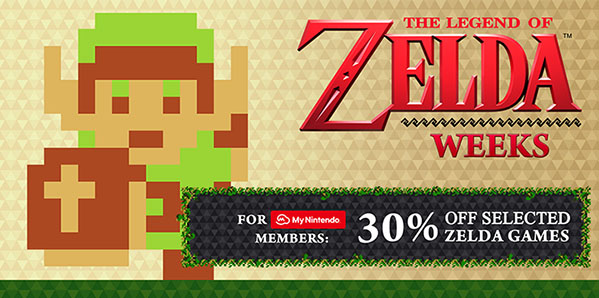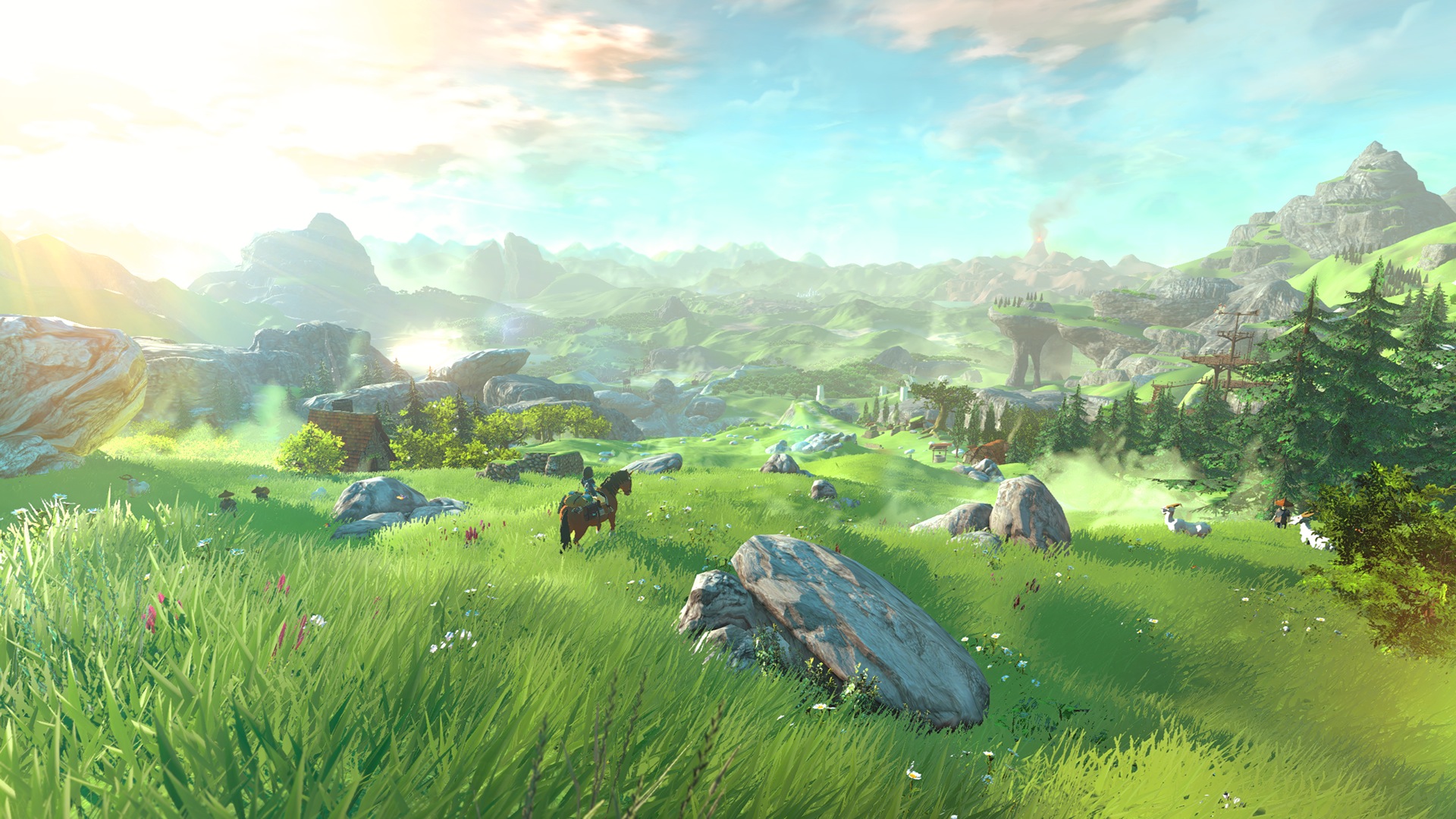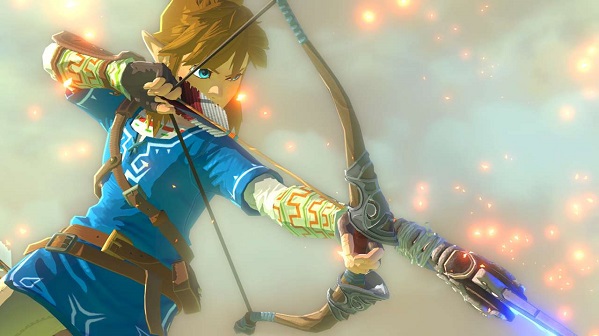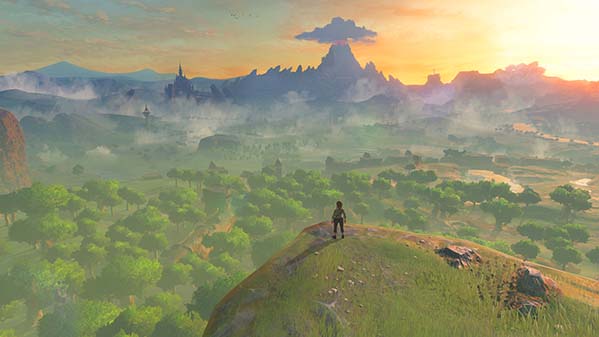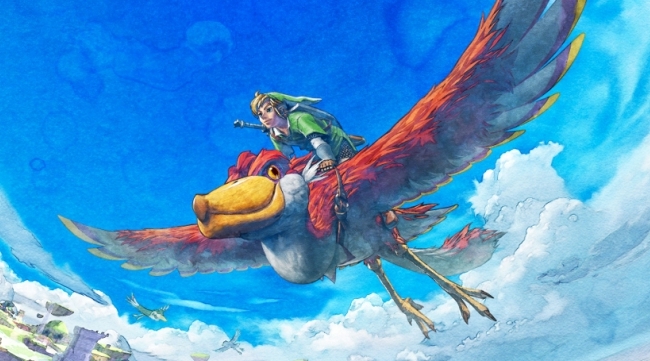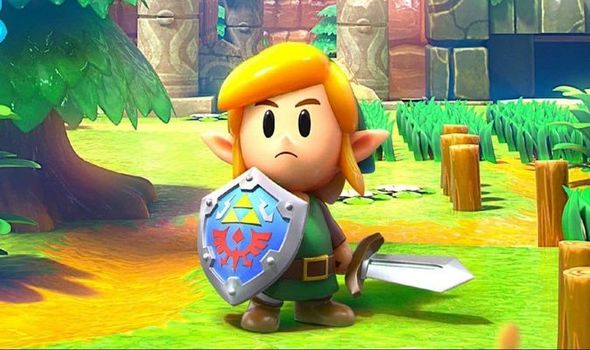
The Legend of Zelda: Link’s Awakening was originally released on the GameBoy in 1993 to critical acclaim. At the time it was considered responsible for increasing sales of the GameBoy system and continued to appear in best-seller listings for several months after its release. Later in 1998 The Legend of Zelda: Link’s Awakening DX was released for the GameBoy Colour featuring colour and support for the GameBoy Printer peripheral. Now over 20 years later Nintendo have remade the game for Nintendo Switch, bringing with it not just new visuals but also quality of life improvements. It’s a great game for newcomers and returning veterans alike.
The Legend of Zelda: Link’s Awakening begins with an anime-style cutscene showing Link struggling to sail through a storm. With a flash of lightning, Link’s boat is destroyed and he is washed ashore on Koholint Island. Link learns the only way off the island is to awaken the island’s guardian, the Wind Fish, by finding and playing the eight Instruments of the Sirens. The instruments are hidden away in dungeons which are guarded by monsters, traps and powerful bosses. Link must overcome these challenges and uncover the secrets of Koholint Island before he can safely return home.
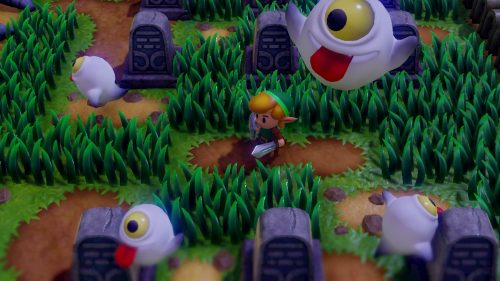
Unlike the Switch’s launch title Breath of the Wild, Link’s Awakening is a classic Zelda experience played from an overhead-perspective. The world is large and features many areas to explore including a forest, mountain range, beach, various villages and a desert. Players can’t access all these areas at once though. Instead you must complete dungeons in a specific sequence where you will unlock new items and abilities that will allow you to access previously unreachable areas. The Power Bracelet, for example, lets players lift heavy boulders and the Roc’s Feather gives you the ability to jump over holes and enemies.
The game guides players to the general area of where they need to go next, but a lot of the experience is about figuring out how to get to and unlock the entrance to the next dungeon. It’s not always straightforward and some players may even get frustrated as they wander back and forth looking for that one pathway they missed. Being a remake of a GameBoy title, the world is smaller than some of the later Zelda releases but it also contains lots of secrets and hidden areas to discover. The main quest takes approximately 10-15 hours to complete, with an additional few hours to round-up anything you may have missed. There’s also a brand new Hero difficulty where enemies won’t drop hearts or fairies when defeated, which should challenge even the most seasoned Zelda player.
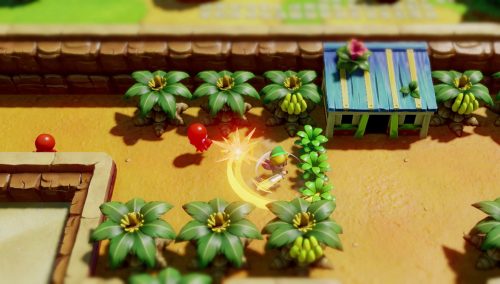
The dungeons are some of the best in the series, featuring perplexing puzzles that will test your grey matter. Initially, puzzles will require players to merely defeat all the enemies from room to room to unlock doors and chests containing keys. As you progress further you’re introduced to crystal switches which raise and lower different coloured blocks, changing the pathways you can follow. Water later becomes a hazard as well, where players must stick to the shallows until they find the Flippers item which lets you swim underwater to investigate caves and hidden paths. The last two dungeons in particular are challenging as they feature multiple levels and hidden pathways that are all interconnected. The game offers only vague hints of how to solve the trickier rooms, so again, some gamers may become frustrated as they endlessly backtrack to see what they’ve missed. Some helpful advice is to consult your map and compass and keep watch for cracks in the walls which can be opened with a bomb. Interestingly, some rooms feature short 2D platformer sequences that have Mario enemies such as Goombas and Piranha Plants. Overall there’s a lot of variety and the game constantly throws new challenges at players.
The original GameBoy release was limited to two action buttons which meant players had to often switch out items when exploring dungeons. On the Switch inventory management has been improved dramatically, thanks to Link’s Awakening being brought inline with other Zelda titles. The Sword, Shield, Pegasus Boots and Power Bracelet are now permanently assigned to the B, R, L and A buttons respectively. This allows for two other items to be assigned to the Y and X buttons, meaning you can have six items activated at any one time. There’s now a lot less pausing and a better gameplay flow overall.
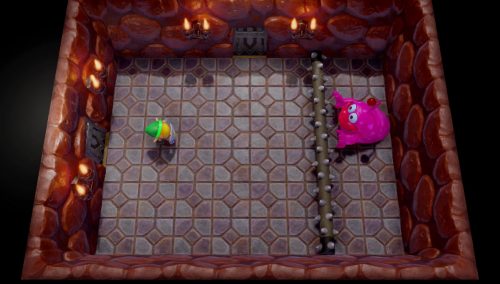
Other quality of life improvements include the crane/skill tester mini-game which has been updated with more realistic physics. It also has, arguably, better prizes to win such as heart pieces, item refills and brand new Nintendo-themed figurines that can be placed in the houses in Mabe Village. The fishing mini-game has received a similar makeover, now featuring different lures and multiple items to collect from the pond including heart pieces, rupees and a bottle. Yep, you read that correctly, the game now features four bottles which can be used to store fairies that will heal you if your hearts deplete. There is also an improved warp point system and additional warp points to make traversing the world of easier. The final heart count has also been increased to 20 as opposed to the original’s 14, meaning there are more collectibles to track down for completionists.
New to the game are Chamber Dungeons which lets you create your own dungeons using rooms you have encountered in the main game. You unfortunately cannot customise the enemies or traps, just the general layout of your custom dungeon. There are some set rules you must follow including there being no “doors to nowhere” and the whole dungeon has to be connected to an entrance room and end boss encounter. You can save your creations to a Zelda Amiibo to share on a friend’s console, though it is disappointing there isn’t online sharing functionality. While it’s fun to create your own dungeons, Chamber Dungeons feels too limited to be something you constantly come back to – perhaps it’s a testing ground for Nintendo to finally give fans an actual Zelda Maker game?
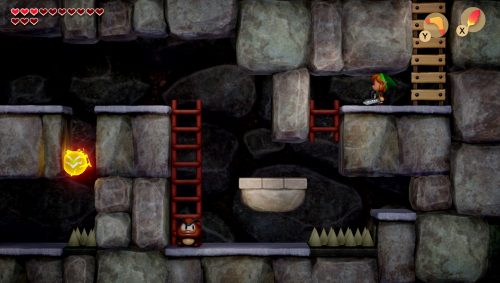
Link’s Awakening adopts a cute diorama-like visual presentation. It’s almost like you’re playing in a toy box full of wooden toys and plastic set pieces. There’s astonishing detail in the environments, such as water shimmering in the light and grass ruffling as you walk through it. Of particular note are the cute facial expressions of the characters – it’s easy to get a sense of their current mood despite the lack of spoken dialog. This is easily one of the best looking games on the Nintendo Switch. For the most part the game runs smoothly, though there is a noticeable dip in framerate when a new area is being loaded. The music has also been completely reworked with a full orchestra to help invoke the emotional story. Returning veterans will enjoy the remixed music while newcomers can look forward to adding new favourites to their video game playlist.
The Legend of Zelda: Link’s Awakening is an incredible remake which features several quality of life improvements and is an absolute joy to play. The dungeons are some of the best in the series and will challenge even the most seasoned Zelda fan. The Chamber Dungeons mode is underwhelming and there are some minor framerate issues when the game loads up new areas, but ultimately this is another must have title on the Nintendo Switch.
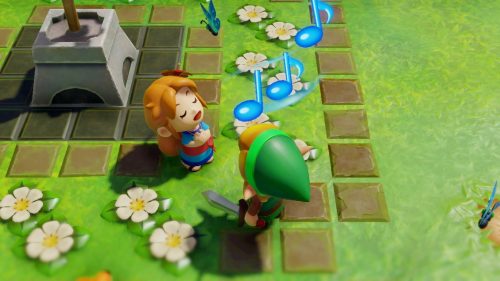
- Cute diorama-like visuals with astonishing detail - Challenging dungeons - Lots of quality of life improvements
- Minor framerate issues when entering new areas - Chamber Dungeons are underwhelming

